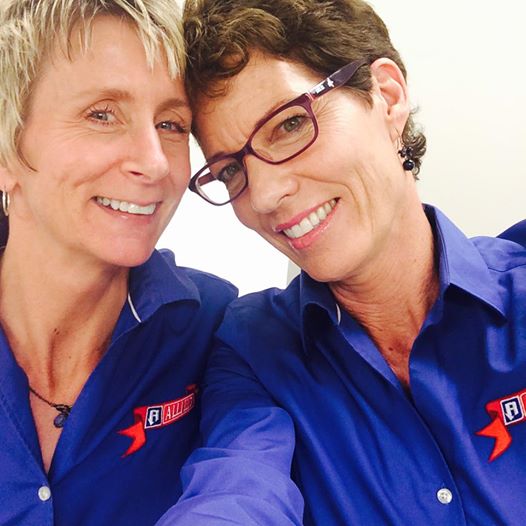Remember the 1980 Olympic Champions…the USA Hockey Team? Remember when Mike Eruzioni called to his team to join him on the Gold Medal dais? Remember the University of Connecticut Huskies, the mean’s and women’s 2004 NCAA basketball Champions? How about their shining, smiling faces as they raised the trophies over their heads? Remember the 2004 USA Women’s Soccer team, also Olympic Champions. Did you see their Gold Medal ceremony…all of them singing the national anthem, loudly and proudly?
A winning team is a powerful, magnetic force. A winning team generates energy…and makes you want to be a part of it!
How about your company? You have a wonderful opportunity to build a winning team. Perhaps that’s the best part of being in business. What is a team? A team is something special that’s created when individuals are free to do their jobs. Teamwork is a paradox. Team members perform individually, yet are dependent on the other members for their success. A winning team is the result of each individual contributing in their own way to the achievement of their common goal.
Let’s use the UConn Huskies men’s basketball team as an example. For the 2003-2004 season, Coach Jim Calhoun’s job was to build a team. The goal: To win the NCAA Championship. He crafted the team positions and the responsibilities associated with each position. I’m certain he worked with his assistant coaches and perhaps some of the players as he refined and defined the positions. Then, he assigned players to the positions. In the position of Center, Emeka Okafor was responsible for controlling the area under the basket and scoring points from that area. The Guards, Forwards…every position had certain responsibilities. Coach Calhoun’s job was to structure the team, and to bring out each individual’s best performance so as to add to the overall success of the team. The ultimate goal for every college team is to win the national championship. And in 2004 the Huskies achieved that goal!
Business, like basketball, is not a democracy. Someone has to be in charge. Someone has to lead. That’s you. Your job is to develop and lead the team to realize the company’s goals.
How do you build a team? By helping individuals win. Business author Jim Collins, in his terrific book Good to Great, suggests, “Get the right people on the bus. Get the wrong people off the bus. Then, put the right people in the right seats.”
An Organization Chart is a graphic representation of the divisions of your company, arranged according to reporting relationship. In other words, the Organization Chart lists who is responsible for what and who reports to whom. The Organization Chart represents the “seats on the bus”, the positions on the team.
Does it make you cringe to think about imposing the formal structure of an Organization Chart on your small shop? Fear not! The Organization Chart can be a wonderful tool. Recalling my many, many jobs, I can count on three fingers the number of times I actually knew for what I was responsible and to whom I was required to report. I would have loved that information on every job. It’s frustrating to not know what your responsibilities are. It’s confusing to have someone tell you what to do just to have another person tell you to do just the opposite.
Create your Organization Chart
You will need…
- A large unadorned wall or dry erase board.
- A stack of Post It notes…the 3×3 inch size is good.
Begin with the end in mind. What is your ultimate goal? In home service plumbing, it might be…
To achieve our sales and profitability goals by solving our customers plumbing problems to their delighted satisfaction.
Now…back up and consider all the things that must be done to make that happen. A responsibility is WHAT needs to be DONE. On the Post Its, write down each responsibility…what needs to be done to deliver your products and services and to keep track of money, people and assets.
DOWNLOAD A FREE ORGANIZATIONAL CHART HERE
Organize…into Divisions and Positions
Divisions are general categories of responsibilities. On a football team, the divisions may be Offense, Defense and Special Teams. In plumbing, the divisions could be…Executive, Marketing, Sales & Production, Administration & Finance and Quality Control. Take a look at the Sample Organization Chart. The yellow boxes represent the divisions. Create divisions for your company. Consider the flow of information and activity as you define your divisions.
Use Post It notes to identify the divisions on your Organization Chart. Put them up on the dry erase board.
Next, group the responsibilities within each division into positions for your company. Move the Post Its around until the positions start to make sense to you. Name the positions. On the Sample Organization Chart the position names are…
- President
- Marketing Officer
- Customer Service Representative
- Sales & Service Manager
- Dispatcher
- Plumber
- Facilities Officer
- Bookkeeper
- Human Resources Officer
- Quality Assurance Officer
Each position will have a list of responsibilities…those behaviors required of whoever is assigned to that position. For example, the Customer Service Representative is in the Marketing Division. Whoever holds that position must fulfill the attendant responsibilities: Answering the phone with the proper greeting, performing follow up calls, offering service agreements to callers, cleaning the Customer Service area daily, etc.
Now, arrange the positions to show the reporting relationships. Who is dependent on whom? Who reports to whom? Don’t think of specific people just yet…think in terms of position. And, don’t be bound by what is currently happening in your company. Think more broadly. Think in terms of how the company should ideally operate. Organize for growth.
Who does What…position Descriptions and Assignments
A position description is a list of the responsibilities for that position. Each box on the Organization Chart represents a position.
Now, assign people to the positions. Put “the right people in the right seats.”
- Put your name at the top. You are the President. “The Cheese.” You are the leader. Understand that the Organization Chart flows uphill. If there is an empty position, the person who holds the position above it is responsible for handling that position.
- The right people in the right seats. As you make your assignments, ask, “Can this person be successful in this position?”
- One person may hold more than one position. In a small company, each team member may hold a few positions. Note that Danny, Susie and Alfred are multi-tasking. Positions can be part time or full time.
- Organize for growth. As the company grows, and as you hire more people, you can change the position assignments. Add an additional box on the Organization Chart if more than one person is assigned to that position.
A review of the Organization Chart process…
- Organize the responsibilities into basic divisions.
- Within each division, group the responsibilities into positions.
- Map out the positions on the Organization Chart.
- List the responsibilities for each position…and create position Descriptions.
- Assign people to the positions. Put your team’s names in the boxes.
Who is left standing?
Gulp. After doing this exercise, you may find that you have someone left over…and all the boxes filled. Creating your Organization Chart forces you to confront this scary fact: You may have someone on the bus who is just taking up space. It could be a family member. It could be someone who has been with your company for so long that he feels like family.
It’s time to get the wrong people off the bus. You know who needs to go. It is not OK to decide to “fire” someone and keep him on the payroll. Once you have made your decision, act on it. When you continue to employ a non-performer, you dishonor the people on your team who share your dream and are productively moving towards it.
Also, people have the right to be successful in their work. Continuing to employ someone who is not contributing is an insult to that person. Is there another position in the company that would be a better fit? You may try reassigning him. If not, let him go. He can find another job to which he is better suited, a job where he can win.
One person show…or ready to GROW?
Can you realize your business goals all by yourself? Is your dream business a one-person operation? It can be done. You’ll still benefit by creating an Organization Chart. All the areas of your business need to be addressed. You will have to shift from position to position. The Organization Chart can make it easier to do that without getting confused.
And, you may decide to add a team member at some point. When you do, you can easily “hand off” a well-defined position to someone else…and put that person’s name in the box on the Organization Chart.
Understand that nothing stays static in the universe. Things are either shrinking or growing. It is tough to be successful in business all by yourself. Open yourself up to the opportunity to grow and develop a team. Maybe you have been burned by an employee and you don’t want to go through that again? A defined Organization Chart, written procedures and accountability systems will create an environment that reduces the “burn” risk.
If you are a one-person outfit with aspirations of becoming a BIG company, the Organization Chart can help you grow fast. A small company doesn’t needformal systems. By imposing the form of a larger company you actually cause the company to grow. The systems drive growth. It works!
The goal is to win.
You may consult with your employees as you put the Organization Chart together. However, you are “The Cheese” and you will make the final call as to who is assigned to each position.
Once you have crafted the Organization Chart, make sure everyone on the team knows their assignments…their positions and the position descriptions. Who does what.
Then, drill and practice and play the game of business. Refine your plays to capitalize on your team members’ strengths. Winning teams are the result of winning individuals…each person adding their energy and talent and production to the mix. Oh, and when it all comes together…when the players “gel” and your team delivers the goods…from the first call for service to the high customer scores…that’s magic. That’s team work. And it is beautiful.
Here’s to your championship team!
















